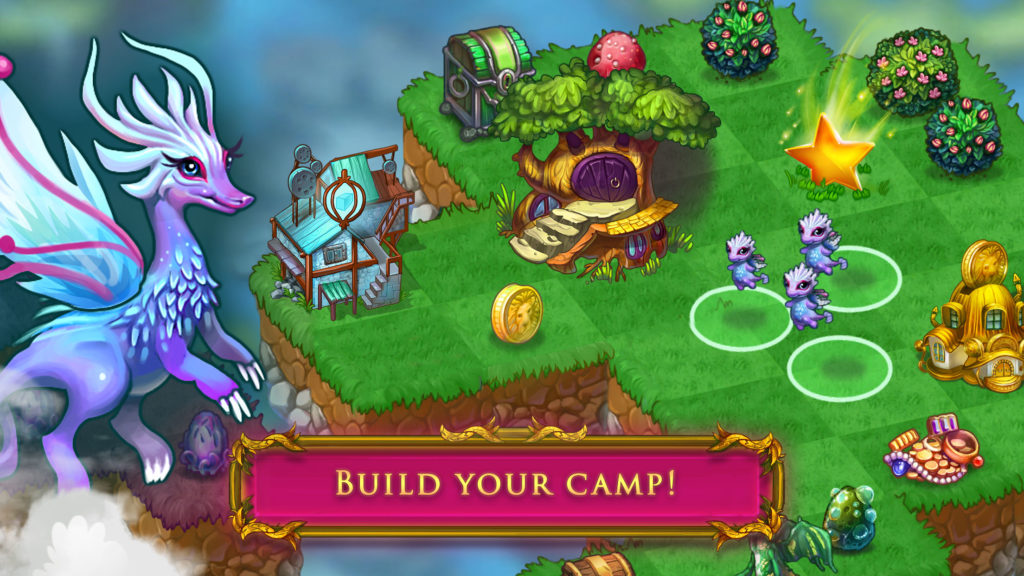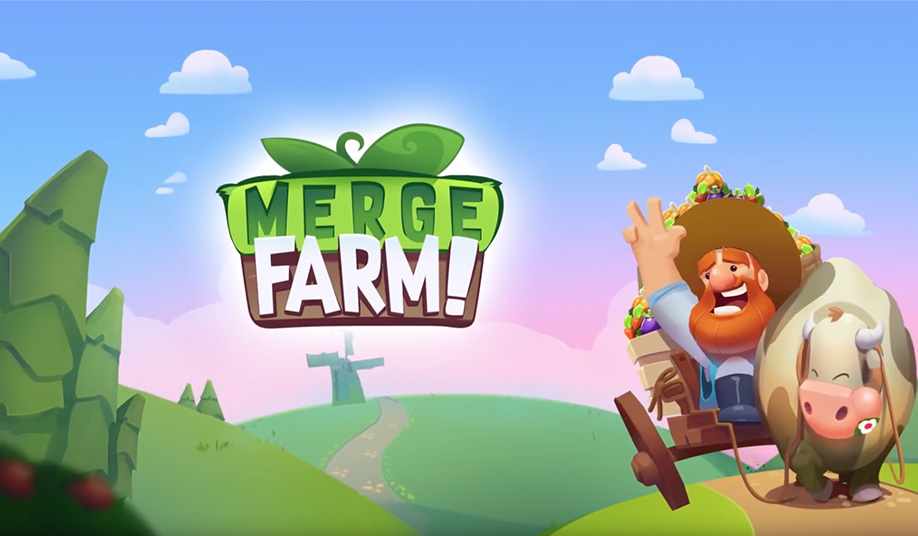Creative approach to Hyper-casual Monetization: Gram Games Experience
Gram Games has gone from an indie studio with five employees to an international company worth $250 million. On the anniversary of its acquisition by Zynga, Gram Games’ Vice President of Strategy, Atilla Karakurum, said App2Top.ru about a creative approach to the creation and monetization of hyper-casual games.
Oleg Nesterenko, App2Top.ru Questioner: You didn’t start out in the gaming industry. How did you get into mobile game dev?

Atilla Karakurum
Atilla Karakurum, Vice President of Strategy at Gram Games: Before joining Gram Games, I lived in the USA for almost 10 years, engaged in corporate strategy and finance. That is, he did the same thing as now, albeit in a different area. I started at Mattel, then moved to a portfolio company with investments from Bain Capital. Actually, no matter what I was doing, there was always a gaming beginning in it: Mattel is a major toy manufacturer, and the portfolio company belonged to the music business. But I decided to go to gamedev because I have always been interested in video games myself.
As a child, I played a lot of things. I started on my first computer — Amiga 500. Then the console appeared. In those days I played Prince of Persia, Lemmings, Need For Speed… In high school, I got acquainted with Quake and Counter Strike. At that time, mobile was just emerging. But in 2015, when I joined Game Dev, the mobile gaming market was already a full-fledged industry. And it’s good, because it allowed me to show my passion for games. Sincere interest makes any job a pleasure.
What was Gram Games like when you first joined it?
Atilla: The company was founded in 2012 by two co-founders: Mehmet Ecevit and Kaan Karamanci. There were five people in the team at the start. The studio has made two games with IAP monetization. We started monetizing our hyper-casual titles through advertising only in 2014. The choice of IAP monetization at the first stages indicates that the team is interested in creating an unusually deep hyper-casual. It was about this approach that Gram Games clearly stated by creating 1010!.
1010! released in 2014. This release was a turning point for Gram Games. With IAP titles, we could not reach the desired peaks in the market. Gram did not have the know-how for effective marketing (this is no longer the case) and often did not have the funds for advertising.

1010!
That is, until exit 1010! did the company survive rather than live?
Atilla: The stage before release 1010! it was a time of trial and error. The team explored a variety of approaches to development. As I have already mentioned, we had difficulties with the first games, they could not be promoted effectively. The company had funds left for only a couple of months. It was a stressful time for all the participants: let them try their best, but there were factors against them that they could not always control. Changing the direction and trying yourself in a completely different genre turned out to be a great solution. When 1010! came out, the company just took off.
What explains the success of 1010! from your point of view as an industry expert?
Atilla: The game has a low entry threshold, there are not even special tutorials here. You just look at the game and intuitively understand its mechanics. We believe 1010! It has become a pivotal game for the hyper-casual market. She was the first of her kind, was something new. She stood out. But even today it is still a very exciting game. Everyone in the company, including me, is still playing it. It is ideal for taking a break and getting some rest. You don’t need to think through a strategy in this game, you’re just having fun.
Your next game, Merged!, was released in 2016 and repeated the success of 1010!. In the release week, she collected her first million installs. What’s in the works on 1010! did it help you understand how to make subsequent titles popular?
Atilla: Launch 1010! he taught us a lot. We figured out how monetization works. Our studio relies heavily on data: we have our own internal data management platform, so we can monitor the behavior of cohorts, see what and how they play, why they take certain steps in the game. We strive to understand our players so that our games give them as much pleasure as possible.
We applied many of our conclusions — from marketing moves to game metrics — when creating Merged!. And I think these iterations reflect the company’s culture and its approach to creative product. But, in addition to statistical data, it is also important to receive feedback from players and employees. And thanks to him, improve the game so that the community knows that it is being heard.

Merge Dragons!
What were the problems after launching 1010!?
Atilla: Every company faces a growth problem. But the most difficult thing for us was to understand how correct the data we receive and whether we interpret them correctly. We couldn’t find a strong analytical solution in the market, so we had to create our own. Other tasks that we had to master were performance marketing and the study of advertising monetization. I think we’ve dealt with that.
What is the place of the acquisition of Gram Games by Zynga as part of your growth strategy?
Atilla: Zynga is a world—class company, a market leader. Our views coincide with them, so we decided to join them.
What views, for example?
Atilla: First of all, they really appreciate our corporate culture and creative approach to production. We are completely independent. Zynga allowed us to work according to our own scheme and do what we do best: create great games for millions of players.
And secondly, Zynga, like us, consider their franchises as eternal.
Did the merger with Zynga affect the processes inside Gram Games?
Atilla: Zynga and I have worked together very hard to synchronize our workflows. Yes, we work independently, but we receive resources, valuable experience and constant support from Zynga. We are still comfortable cooperating.
Gram Games is focused on casual projects and at the same time helped the formation of the so-called hyper-casual. What do you think about these directions?
Atilla: Our company has been interested in IAP games since the first days. But switching to hyper-casual games has become a sensible tactical move. Thanks to this, we gained experience, raised funds, and then, returning to the IAP, hired the best specialists to work on deeper casual games, such as Merge Dragons!. But no matter what our portfolio is, casual or hyper-casual, the most important thing for us is that people have fun and are interested in our games. For us, it’s not about choosing a specific direction, but about creating original core mechanics that will give pleasure to players.

Merge Farm!
But you do realize that casual and hyper-casual titles have different audiences?
Atilla: In the industry as a whole, the audience is determined by genre preferences and demographic characteristics. In games like MARVEL Contest of Champions, for example, you will see more male players, because they, it seems to me, accept RPG elements better. Women mostly play Candy Crush and the like. So I think it all depends on the genre and theme.
You have monetized your games with both IAP and advertising. Which of these turned out to be more effective for you?
Atilla: IAP and advertising are equally important in our projects. In Merge Down!, as in Merge Dragons!, there are both. We strive to use several types of monetization at once, if they make sense for the player and if it does not interfere with the perception of the game. By the way, that’s why it’s so important to collect feedback from the audience.
Most of your recent projects use merge mechanics. Obviously, you are building on the success of your previous games. But will we see the new core mechanics from Gram Games?
Atilla: I can only say that players should expect even more exciting games from Gram Games. We learn and develop ourselves with each new game. Merged!, Merge Town!, Merge Farm!, Merge Gems!, Merge Dragons! — they all use merge mechanics, but still they are very different games. They require different resources to merge items, plus they differ from each other in the structure of monetization and the duration of the game. After all, they offer players different experiences. Our current core mechanics work, the players like it, so we are developing more and more fun and creative options. These are eternal franchises. And we are very interested in what kind of future they will open up to the players.
Just like us! Thank you for your time and good luck with your eternal franchises!
